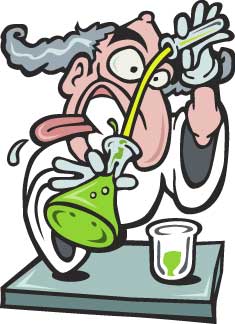Aboriginal people built water tunnels
Indigenous Australians dug underground water reservoirs that helped them live on one of the world's driest continents for tens of thousands of years, new research shows.
The study, which is the first of its kind, indicates Aboriginal people had extensive knowledge of the groundwater system, says hydrogeologist Brad Moggridge, knowledge that is still held today.
Some 70% of the continent is covered by desert or semi-arid land, which meant its original inhabitants needed to know how to find and manage this resource if they were to survive.
"Aboriginal people survived on one of the driest continents for thousands and thousands of years," says Brad Moggridge, who is from Kamilaroi country in northern New South Wales.
"Without water you die. They managed that water sustainably."
Moggridge, currently a principal policy officer in the New South Wales Department of Environment and Conservation, did his research as part of a Masters degree at the University of Technology, Sydney.
He based his work on oral histories, Dreamtime stories, rock art, artefacts and ceremonial body painting as well as written accounts by white missionaries, surveyors, settlers, anthropologists and explorers.
Managing scant resources
Moggridge says Indigenous Australians channelled and filtered their water, covering it to avoid contamination and evaporation. They also created wells and tunnel reservoirs.
"Groundwater was accessed through natural springs or people used to dig tunnels to access it," he says.
"Sometimes they'd dig till they found the water and then they'd build a system so they could access the water. Sometimes they've go fairly deep and people would slither down there and get their water."
Aboriginal people also used terrain, birdlife, vegetation and animals as markers for water, Moggridge says.
For example, they followed dingos to rock pools and waterholes while ants led them to subterranean reservoirs.
"They used the landscape," he says. "For example, you're in a dry area and all of a sudden there's a large number of ghost gums, so you'd think there must be some groundwater."
The Dreamtime
Aboriginal people's understanding of their groundwater system permeates Dreamtime stories, Moggridge says.
For example, the rainbow serpent is a key symbol of creation but its journey from underground to the surface also represents groundwater rising to the top via springs.
Moggridge says European settlers owed their subsequent knowledge of groundwater to local tribes and trackers, and even much of Australia's modern road system is based on water sources identified by the original inhabitants.
"A lot of the old roads in New South Wales are based on Aboriginal walking tracks ... and their water supply would have been along the way," he says.
The Desert Knowledge CRC is also trying to link traditional knowledge with science in terms of water management in central Australia, home to numerous remote Indigenous communities.
Current projects include looking at the cultural values of water, a spokesperson says.
story link


0 Comments:
Post a Comment
<< Home